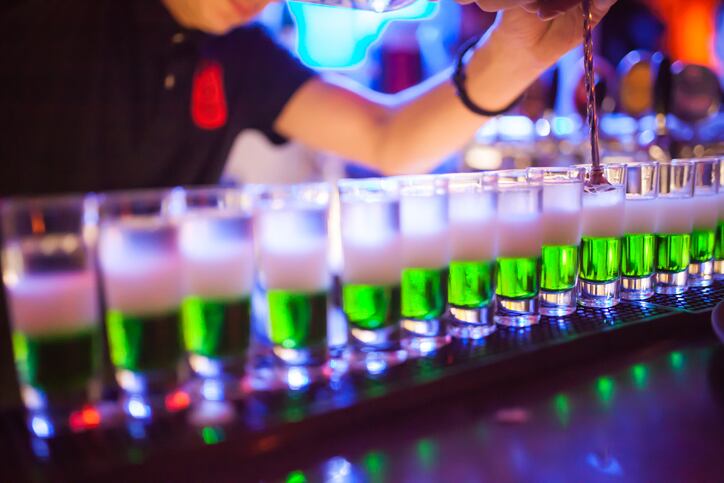Alcohol consumption in China has very traditionally been a male-dominated scene, especially as the most popular alcohols tend to be high ABV hard liquor options such as baijiu and whiskey, and ancient culture generally saw drinking as a very unladylike pursuit.
In keeping with the evolution of the times and as China’s market begins to modernise and open up, today female consumers are increasingly being viewed as an untapped market with immense potential in the eyes of the industry, with many traditional and new-age brands alike taking steps to innovate products that would attract this demographic.
This is taking place throughout various alcohol categories from traditionally male-dominated liquors and wines, as well as newer-age drink categories such as hard seltzers in the country.
World-renowned luxury broker Sotheby’s confirmed that its rare wine and spirit auctions in China and Hong Kong have seen an annual 55% increase in female buyers over the past five years, and data from international alcoholic industry analysis firm IWSR also confirmed that women, particularly in the millennials age group, are making up an increasing percentage of whiskey sales from Scotland to China, and that wine is a particularly popular beverage option for Chinese females in general.
“Wine offers a modern, sophisticated drink for aspiring younger Chinese consumers. For women, it offers a much more stylish option than beer, and [consumers are also] attracted to the perceived health benefits,” IWSR Research Director for Asia Pacific Tommy Keeling said via an IWSR report.
This has inspired various alcohol brands with a play in the market to look to innovating more products to suit the female palate, particularly in terms of flavour development and calorie minimisation.
One example is beer giant AB InBev, which launched RTD spritz range Ritas Spritz in China to specifically target female consumers.
“[With spritz and] canned wines on the rise, we felt there was no better time to shake up the status quo with Ritas Spritz,” AB InBev VP of Beyond Beer Brands Chelsea Phillips said.
“This line is [targeted] at women as the main consumer, [available in flavours such as] White Peach Rose, Pear Orange Sangria and Strawberry Blueberry Sangria, and contains a lower alcohol [of 6%].”
World Bank data has put Chinese female consumer alcohol consumption at three litres per capita in 2018 - almost double what it was about a decade before in 2005 when it was 1.6 litres per capita, and this number is estimated to have gone up even further since the onset of the COVID-19 pandemic.
"There is definitely growing female alcohol consumption taking place in the China industry, and this makes for a booming market for drinks like hard seltzers," China's pioneering hard seltzer brand ZEYA Founder and CEO Eric Hoang told FoodNavigator-Asia.
"There are several drivers in the market pushing this for both younger and female Chinese alcohol drinkers - they want to switch to alcoholic beverages that are more fashionable, that are easier to drink and have a portfolio of more flavours or variety for them to choose from.
"So in a category like hard seltzers where innovating to create new varieties, whether it's developing more flavours or using different bases or even adding in various functional benefits - this will appeal to these growing alcohol consumer groups."
Within such extensive innovation possibilities though, it has also been observed that localised flavours and ingredients still curry favour amongst local consumers, including female and younger groups.
"We've seen some of the most successful innovations come from the fusing of new-age concepts with local traditional ingredients," Hoang added.
"For instance in hard seltzers things like hawthorne, waxberries (Chinese bayberries) or even green beans have been used as ingredients or flavouring; and there's also been a lot of interesting local alcohol bases such as plum wine, rice wine or baijiu coming into the fray."
Convenience and COVID-19
In general, alcohol purchase and consumption increased just about all over the world during the COVID-19 lockdowns, and this was no different in China. And with lockdowns in China being one of the strictest and most prolonged in the world, an increased necessity for convenient options also bloomed very quickly.
“The prolonged COVID-19 restrictions and lockdowns in some Chinese cities meant that people have been stuck at home [so] drinking at home has become much more of a thing than before,” Hoang added.
“In addition, this also led to an increase in consumption of drinks in formats that are easy to both buy [e.g. via e-commerce] and consume [e.g. without needed to pour out into and wash a cup or repeatedly take out and out back a large bottle].
“So convenient forms of alcohol, such as seltzers which are packaged in basically ready-to-drink in bottles or tins and makes it very easy for consumers to just drink these at home, have emerged a big winner during this time, contributing to its booming growth in China.”





